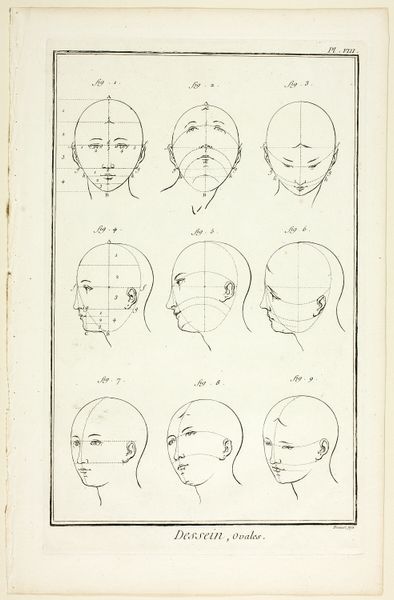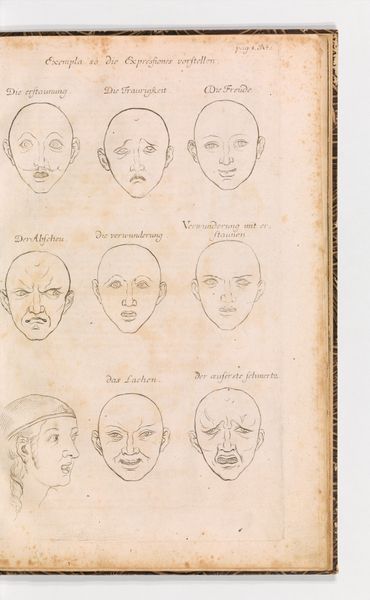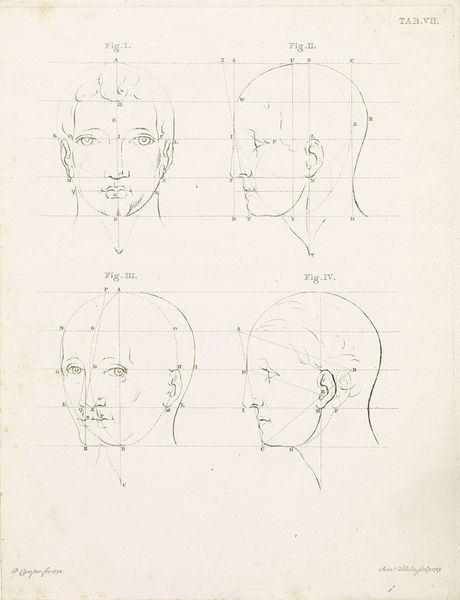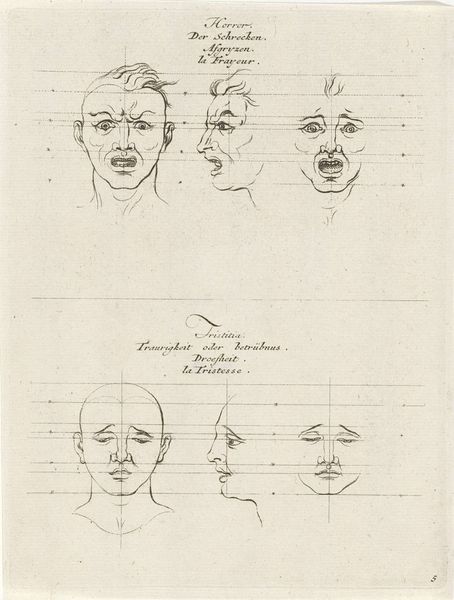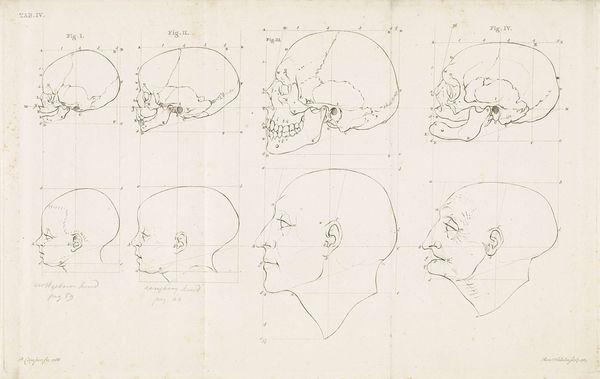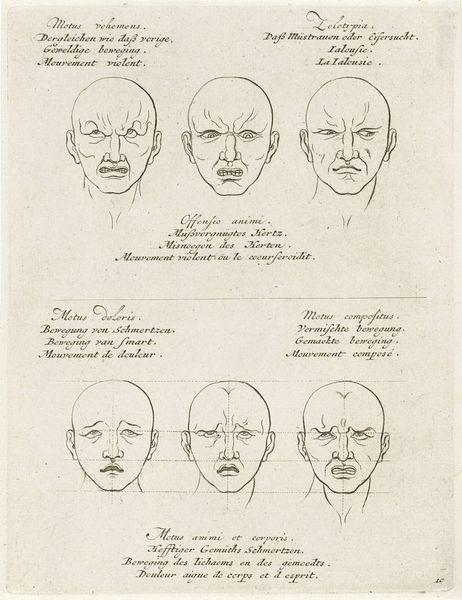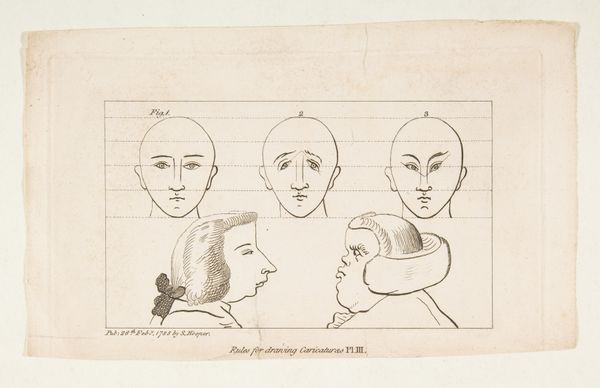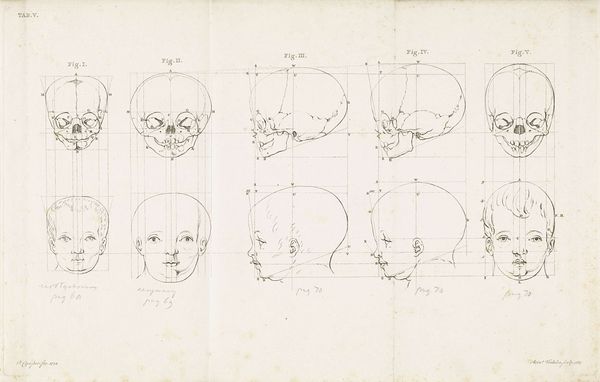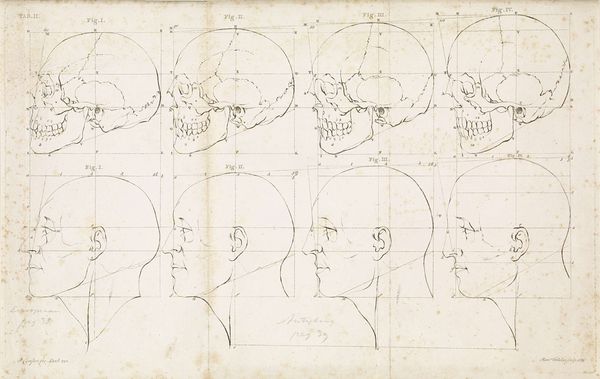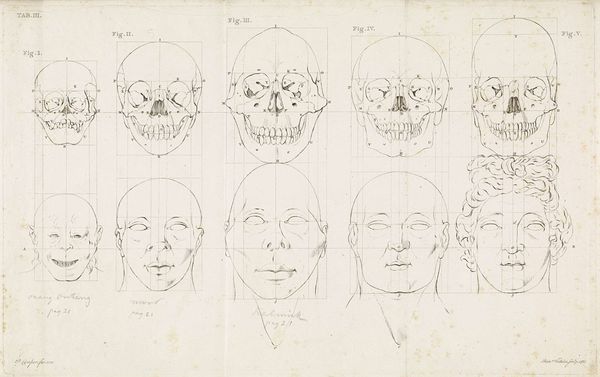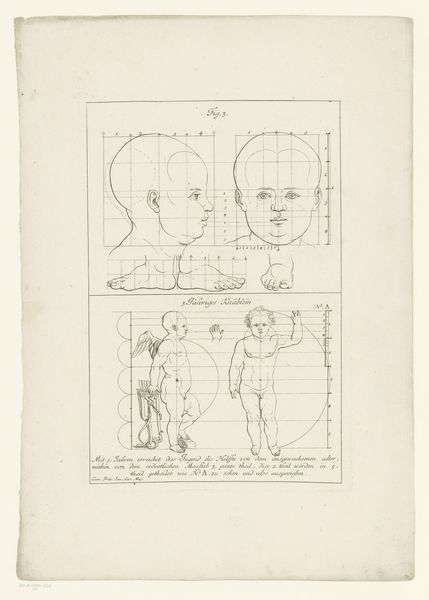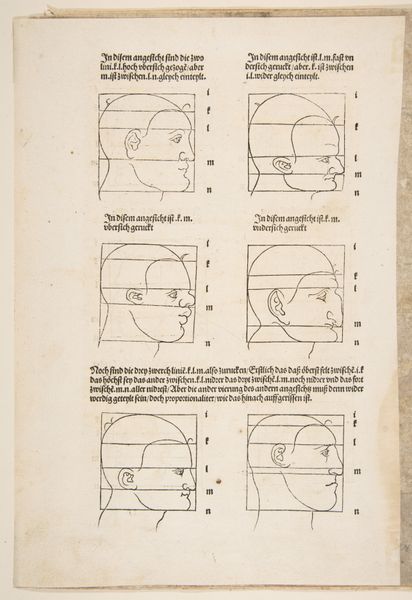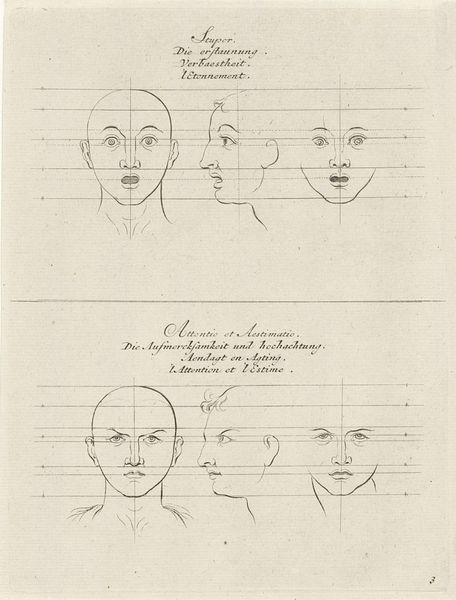
drawing, print
#
portrait
#
drawing
#
aged paper
#
toned paper
#
light pencil work
#
head
# print
#
book
#
sketch book
#
figuration
#
form
#
personal sketchbook
#
france
#
line
#
sketchbook drawing
#
watercolour illustration
#
history-painting
#
storyboard and sketchbook work
#
academic-art
#
sketchbook art
#
watercolor
Dimensions: Overall: 11 3/4 x 9 1/8 x 1 11/16 in. (29.8 x 23.1 x 4.3 cm)
Copyright: Public Domain
Editor: So, this is a page from "Methode pour apprendre le dessein…" dated 1755 by Charles Antoine Jombert, held at the Met. It's essentially a drawing lesson, demonstrating how to sketch human heads from various angles. I’m struck by its systematic approach and the visible gridlines. What is its cultural relevance in its period? Curator: That's an insightful observation. Think about the Enlightenment. How did society in this period place emphasis on reason, science and knowledge dissemination? A manual like this suggests a desire to codify artistic knowledge, democratizing access to art education. This points toward changing social structures impacting who could become an artist, or who was exposed to drawing, as a skill or pursuit. The book’s publication reveals something about who art education was intended for during this era. Were these practices meant for elite classes, emerging bourgeois, or perhaps a broader segment of society? Editor: So, it’s less about individual genius and more about learning technique? It feels so... standardized. Curator: Precisely. Standardized techniques also meant controlled imagery and aesthetics. The question then becomes, who benefitted from these standardized practices and imagery? The printing press allowed for the wider distribution of information. Was this to elevate taste among new consumer classes, or reinforce societal hierarchies? Editor: It's interesting to think of this artwork as a tool for social mobility, and as a vehicle for controlling tastes. The layout reminds me of an instructional diagram in an old textbook. I always viewed skill in the arts as expression and an intrinsic gift, not something learned through geometric equations. Curator: These types of manuals shaped not only drawing styles but the values associated with artistic skills during the Enlightenment and beyond. Thanks for letting me consider this manual from a social and political angle! Editor: I hadn't thought about it that way before. Thank you!
Comments
No comments
Be the first to comment and join the conversation on the ultimate creative platform.
